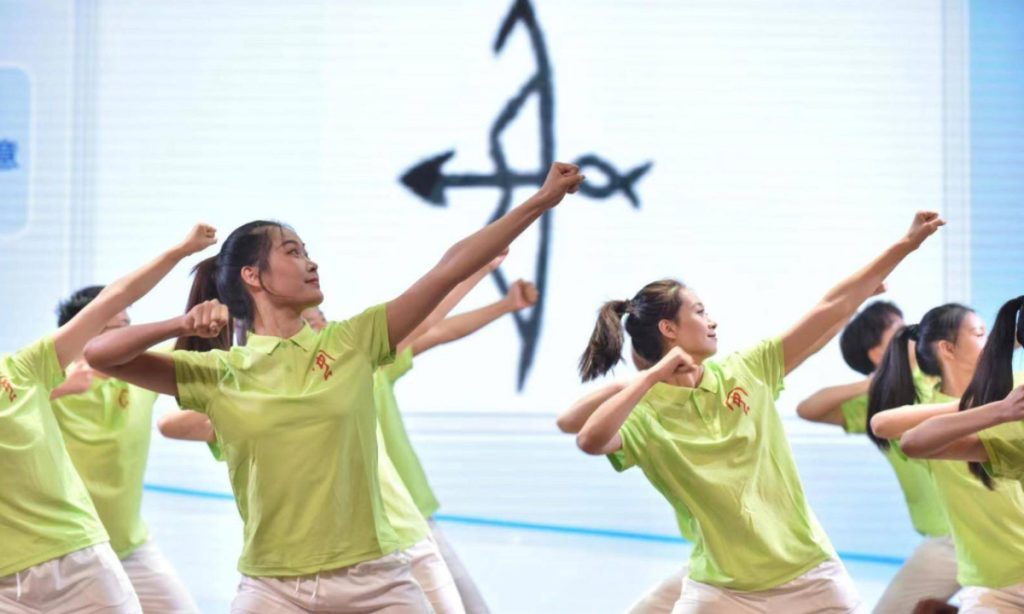Physical exercises revive oracle bone inscriptions

A set of physical exercises designed based on oracle bone inscriptions has been publicized to promote traditional Chinese culture and language by China's Ministry of Education.
The exercises were initiated by Anyang Normal University (ANU) in Central China's Henan Province and designed by its School of Music. Consisting of 19 characters of the oracle bone inscriptions, the aim is to artfully combine music, dance, and physical exercise with ancient writing in order to revive, apply and popularize the inscriptions.
Zhang Lijuan, principal of Zhonghuayuan Primary School, told the Global Times that the exercises will be put into use after the school opens in autumn, and they will be introduced to other schools in the future.
Guiding students to explore the oracle bone inscriptions in various ways aims to inform them about the wisdom of their ancestors and ancient Chinese civilization, which will also boost their confidence in traditional Chinese culture, Zhang said.
A total of 37 provincial and city-level schools will use these exercises in Anyang, and oracle bone inscription libraries and clubs will also be set up to impart the related knowledge. Every year, 100 teachers will be selected and trained in his regard.
Outside the school, the Global Times found that a number of parents were taking their children to visit the National Museum of Chinese Writing (NMCW) in Anyang.
Zhao Kexin, a seventh-grader, is already a "senior" member of the public benefit organization "the Oracle Bone Inscriptions School." She told the Global Times that she began to take part in the school's weekend activities when she was 6.
"In the beginning, mom signed up for me, but later I became a fan of the oracle bone inscriptions. Here I can better learn about the development of Chinese characters, feel their charm, and promote the culture of my hometown."
In addition, ANU has collected materials related to the oracle bone inscriptions over the past 120 years, developed them with digital and smart technologies, and built a database platform.
Liu Yongge, director of the School of Computer and Information Technology, told the Global Times that among the several oracle bone inscription resource-sharing platforms in China, the ANU's platform is the largest and most welcomed by international scholars.
"When there is an occasional outage or the platform is being updated, foreign experts call and ask about what was going on," Liu said.
Anyang is one of the seven ancient capitals in China. The oracle bone inscriptions were first discovered in the Ruins of the Yin (or Shang) Dynasty (1600BC-1046BC) in Anyang in 1899. There are roughly 4,000 oracle bone characters, which basically established the structure of Chinese characters. The oracle bone inscriptions represent a mature writing system in China, the origin of Chinese characters, and the root of fine traditional Chinese culture. In October 2017, they were inscribed on the Memory of the World Programme (MoW). By now, about 160,000 items of the oracle bone inscriptions have been unearthed.